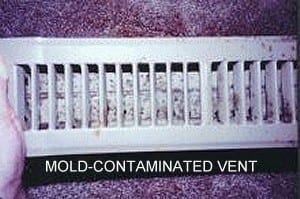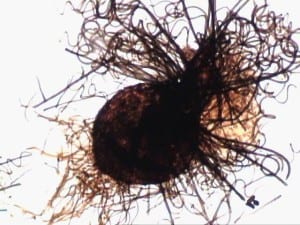Our Blog | Page 3 of 3 | Dry Ease
Importance of Calling a Professional
Several years ago, while renting an apartment in Brooklyn, my family and I experienced chronic flooding in our basement that brought outside sewage into our home. But our attempts to clean up and restore the damage were not deep enough — soon, with a musty smell pervading, we realized we had another problem on our hands. A mold problem.
While DryEase is rated #1 in mold remediation services, DryEase also provides water damage repair. A building that experiences floods or leaks becomes a vulnerability; not only does water damage negatively affect both the cosmetic appearance and structural integrity of the building, if the damage is left alone without proper recourse then rot may set in — after all, many building materials are organic and susceptible to decay, especially if compromised. And we know that excessive water or humidification can easily lead to a mold infestation. Rehabilitation and prevent are key to preventing further complications.
This is where DryEase comes in. Not only are we here to removal your mold, but we are here to prevent mold from becoming a problem. Prevention not only saves you valuable time and money, but equips you with the knowledge and know-how to save your investments.
DryEase is exceptional in one part because we provide Emergency Water Restoration. This is crucial, because where water damage is concerned, time is of the essence. Water damage is progressive; there is a window of time where the damage can be restored, but any delay in response endangers this. Consider that water may wick up the walls or travel along molding, penetrating through floor coverings and into the subflooring. A common scenario we see at DryEase is a leak from an upstairs bathroom infiltrating the room below, whether that is the child’s playroom or a closet full of valuables. This means that renting a shop vacuum or contracting a company to merely dry out the carpet, may not be enough to fully dry the area.
Can water damage be repaired? Yes! DryEase offers a full-service water cleanup and remediation that goes above and beyond to protect you and your home.

Evidence of Water Damage from Above

Water Damage on Wood Surface
House With Mold
House With Mold
Here Are Places In Your House That May Be Harboring Mold
A house with mold poses severe health risks for its inhabitants, reducing quality of life. It also harms the value of the house and may affect the structural integrity. There are thousands upon thousands of species of mold, many that have yet to be identified, that each have their ideal environment. Problematic mold in the house tends to prefer surfaces that have higher humidity, lack exposure to sunlight, and have poor ventilation. What you can take from that is a good prevention against house mold is to dehumidify and ventilate.
Walls

While non-porous walls reduce the likelihood of the mold embedding itself past the surface, any walls that are porous present a unique challenge. Often, they need to be cut away or removed to reach the whole mold infestation. A simple wipe down on the surface will not be enough, as the remainder of the mold colony has gone behind the wall. Drywall is largely made of cellulose and minerals that mold loves; wallpaper and wallpaper glue also produces a food source. The cavities behind walls are optimal for mold because they have limited airflow, limited sunlight exposure, and tend to be more damp than the outside air.
Windows and Window Frames

Condensation forming on the window and along the window frame provides the moisture that mold needs to thrive. While mold cannot feed on the glass itself, a dirty window can provide food for the mold. The window frame and seal where the window meets the window frame is suspect, as well.
Furniture

Furniture made of organic materials such as wood or leather are prone to mold colonization. Upholstered furniture particularly absorbs moisture, making it an area prone to mold colonization. Check behind, underneath, and inside furniture.
HVAC System


HVAC systems can cause cross contamination, as they allow mold spores to travel around the premises. The heating or cooling system itself should be checked for mold, as well as any vents or ducts.
Clothing
Clothing that does not necessarily see regular use may become home to mold, especially if left in mold’s ideal conditions of low airflow and darkness, such as a closet. Because clothing tends to be made of organic materials such as wool, cotton, or leather, they can become mold ridden and damaged.
Tags: mold removal, mold removal nyc, mold removal nj, mold removal ny, mold removal queens, mold removal brooklyn, mold removal bronx, mold removal manhattan, mold testing, mold remediation, mold inspection, mold remediation nyc, mold remediation ny, mold remediation nj, mold inspection nyc, mold inspection ny, mold inspection nj, mold testing nyc, mold testing ny, mold testing nj, water damage nyc, flood damage, flooded house, flooding house, flooded home, flooding home, flood restoration, flood clean up, basement water, flooded basement, mold abatement, mold removal nyc, mold removal nj, mold removal brooklyn, mold removal company, mold removal remediation estimate, flood water damage repair, basement flood water damage, flood damage clean up company, mold clean up removal, water flood damage nyc, mold removal contractor, mold flood restoration service company, basement flooding, flood and fire restoration, water damage repair nj, water damage repair ny, water damage repair nyc, commercial flood restoration
5 Dangerous House Molds
5 Dangerous House Molds
These molds should NOT be in a clean, healthy home!
Aspergillus

This mold has hundred of species spread throughout the globe. In a home environment, humid conditions allow them to grow on leather and cloth fabrics. Other species may also grow on grains and exposed food. They produce toxic metabolites and severe allergic reactions in individuals.
It is estimated people inhale thousands of Aspergillus spores daily, but our immune systems can fight them off — but the fungi itself can infect the lungs of someone with a suppressed immune system, a disease called Aspergillosis. There, it thrives off the warm, moist environment of the lung’s alveoli.
Chaetomium

This “hairy” looking mold is considered a contaminant and a causative agent of infections. There have been cases involving immune suppression, brain abscesses, peritonitis, and onychomycosis.
Cladosporium

These produce olive-green to brown or black colonies. This mold has spores with a wide dispersion rate. Like most molds, it prefers a surface where moisture is present. Although not typically pathogenic to humans, it can cause skin and toenail infections and is a sinus and lung irritant. The spores are a known allergen.
Penicillium

It looks like a newly budding tree underneath a microscope.
Causes allergic reactions in both skin and bronchial tests. It may cause an infection called “mucrosis” in immune compromised individuals such as the young, the elderly, or unwell.
It produces a strong musty order, as well as causing food spoiling and the destruction of leather goods. This fungus produces the neurotoxin verrucosidin as well as acids cyclopiazonic and penicillic. The liver, the kidney, and the neurological systems can all be adversely affected by this poison. Fever, anemia, weight changes, and skin lesions are common symptoms of having been exposed.
Certain species produce penicillin, used to create antibiotics.
Stachybotrys chartarum

The infamous “black mold”, Stachybotrys produces some of the most dangerous toxins of molds commonly found in the household. It feeds off the cellulose-rich building material such as gypsum and wallpaper, especially where there has been water damage or high moisture readings. It is possibly linked to the sick building syndrome.
Stachybotrys poisoning causes pulmonary hemorrhaging, sinus irritation, headaches, and irritability. It suppresses the immune system, allowing other opportunistic infections to take hold.
Most molds come in a variety of colors — from black, beige, white, green, brown, and so on. While not all visually black mold is Stachybotrys chartarum, the risk is definitely there.
Black Mold In Home
Black Mold In Home
What happens if you are living in a home with black mold?
Black mold isn’t just unsightly or foul smelling. Black mold damages the surfaces upon which it feeds and grows, reducing the structural integrity of a home. But black mold doesn’t stop causing problems there. If black mold gets into your own body’s system, it can cause extremely adverse health effects. By allowing black mold to stay and grow, you’re putting yourself, your children, and even your pets in danger. A house with mold is a dangerous and ill-suited for proper living conditions.
The chemicals black mold releases as a byproduct of its respiration and digestion are known toxins, sometimes referred to as mycotoxins. When black mold is colonizing your home, it naturally releases spores as part of its reproduction cycle. Microscopic, they drift through the air much like the cold virus; an unseen threat. These spores can be easily breathed in where they wreck havoc on your respiratory system as a foreign object; but as your lungs supply oxygen into your blood, the toxins from the black mold go with to the rest of your body.
Affects Of Harmful Mold In Homes
When your body is exposed to the toxin, it begins creating illness. Headaches, difficulty concentrating, poor memory, shortness of breath, sinus inflammation, muscle stiffness, joint pains, feelings on the skin like crawling bugs, abdominal pain, are some of the many symptoms of having contracted the Toxic Mold Syndrome. Remember, this may not just happen to you; children, the elderly, and those with compromised immune systems are especially susceptible to becoming sick.
Mold Removal
This isn’t a mysterious disease; many clients come to Dry Ease Mold Removal saying their doctors have confirmed that their poisoning is due to mold. The obvious solution is to decontaminate the home. But a simple surface wipe isn’t necessarily going to clean your home of black mold. Mold has the ability to stretch “roots” far into material, meaning one mold spot could simply be an indicator of a larger colony hidden away. Mold also loves the minerals and dark, damp, quiet space behind walls that sheetrock and gypsum board provide. You may feel your home is dry, but mold can thrive off moisture we cannot superficially detect. It is imperative that you remediate with a professional mold cleanup company such as Dry Ease Mold Removal. We have the experience and extensive knowledge to clean mold from your home and prevent future infestations.



Recent Comments